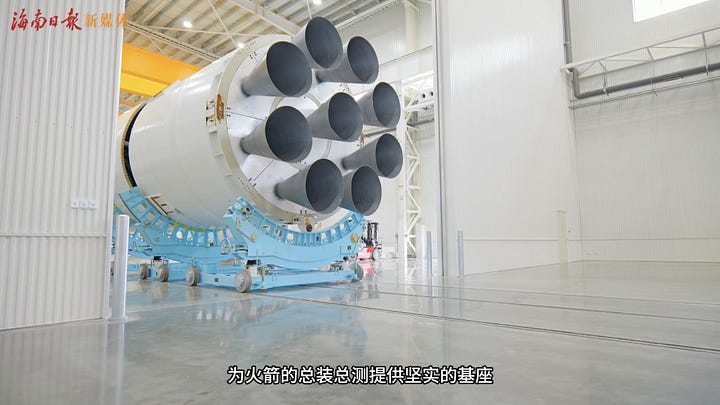iSpace, Space Pioneer Expect Reusable Rockets to Fly Before End of 2025
Hundreds of millions of Yuan and a new processing facility are opening the path to launch.

As support facilities are completed and large amounts of new funding are secured, two of China’s reusable rockets are stepping closer to flight.
iSpace shared on October 9th that its launch vehicle processing and refurbishment facility, neighbouring the Wenchang Commercial Space Launch Site, has completed construction. The 28,800 square meter typhoon-resistant facility is claimed to be China’s first reusable rocket refurbishment plant, with its opening ceremony attended by Hainan (海南) province’s government and party committee, Wenchang’s (文昌市) government and party committee, and relevant officials from the region’s space administration.
At the ceremony, company Chairman Peng Xiaobo (彭小波) expressed his thanks for government support in the facilities construction and efforts to have it completed on time. He also added that the processing and refurbishment facility will be the foundation of iSpace’s reusable rocket operations.
In news related to the opening ceremony, it was announced that Hyperbola-31, iSpace’s two-stage partially reusable rocket, is planned to fly for the first time in the fourth quarter of the year. Hyperbola-3’s debut flight is expected to be prepared in the new facility, before heading to the nearby Commercial Launch Pad 2.




Two months earlier, iSpace launched its drone ship for recovering Hyperbola-3 first-stage boosters, with sea trials expected to be underway. Cryogenic proof testing of propellant tanks has been underway as well, with several hundred million Yuan secured in investment last month. News of completed Hyberbola-3 is yet to be shared.
A few hours after the ceremony in Wenchang, Space Pioneer announced that it had completed its Pre-D and D series funding round, raising about 2.5 billion Yuan (approximately 351 million United States Dollars, on October 10th) from Central, provincial, and municipal government-backed investors, alongside a few from the private sector. In the announcement, the company said that the funds will be used to expand production capacity of its launch vehicle and rocket engines, to around fifty and five hundred each per year respectively, as well as for research efforts.
Through a short note in the announcement, Space Pioneer disclosed that its two-stage partially reusable Tianlong-32 launch vehicle is targeting a debut flight before the end of the year, citing the success of last month’s first-stage static fire. That target is doable, as Tianlong-3 has a few milestones left before launch, with its second-stage preparing to fire up, alongside a recently completed launch pad at the Jiuquan Satellite Launch Center.
At the moment, it’s currently a five-way race in China’s commercial space sector to fly the country’s first reusable rocket. Racing to the finish alongside iSpace and Space Pioneer are LandSpace with Zhuque-3, Galactic Energy with Pallas-1, CAS Space with Kinetica-2 (although reuse will be after a few flights).
Planned to send 13,600 kilograms to low Earth orbit when expended or 8,600 kilograms to low Earth orbit with first-stage reuse.
Tianlong-3 is a two-stage liquid-fuelled partially reusable launch vehicle expected to be capable of carrying 17,000 kilograms to low Earth orbit.


